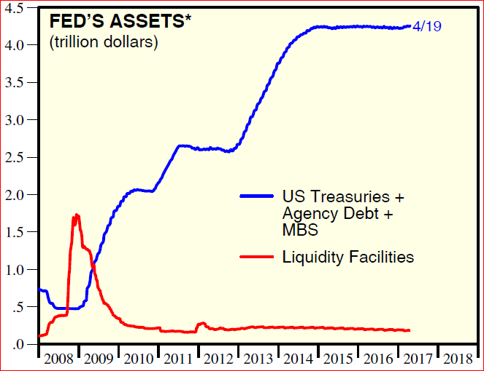In March, the FOMC majority opinion held that it was time to start to shrink the Fed’s balance sheet and that the reduction should be carried out in a “predictable manner”. Various Fed members want to halt the program of reinvesting principal payments from maturing securities, starting as soon as this year, according to the minutes of the March meeting. The FOMC has been clear that a tightening program would eventually involve shrinking the central bank’s balance sheet. However, it said that it will not start unloading securities until the federal funds rate is “normalized“. Yet, recently, a number of Fed officials have come out in favor of shrinking the balance sheet starting this year.
The financial markets have been expecting this kind of statement for some time, yet scant discussion has taken place on the basic question: is it necessary to do shrink the balance sheet?
Conventional thinking is that, since quantitative easing is an “unconventional” policy, it is high time to return to more traditional Fed policy. Expanding the balance sheet from $800 billion to $4.5 trillion (see accompanying chart) in a short time is highly unconventional and a return to normalcy is required. Former Chairman Ben Bernanke has gone on record saying that “the prudent approach to shrinking the balance sheet is … to delay the beginning of that process until the short-term rate is well away from zero“[1]. He seems to be in no hurry to start that process given the current interest rate levels.

Source: Yardeni Research Inc.
A recent article in the Financial Times by Alexandra Scaggs makes several interesting points in favor of retaining a large balance sheet.[2] :














Leave A Comment